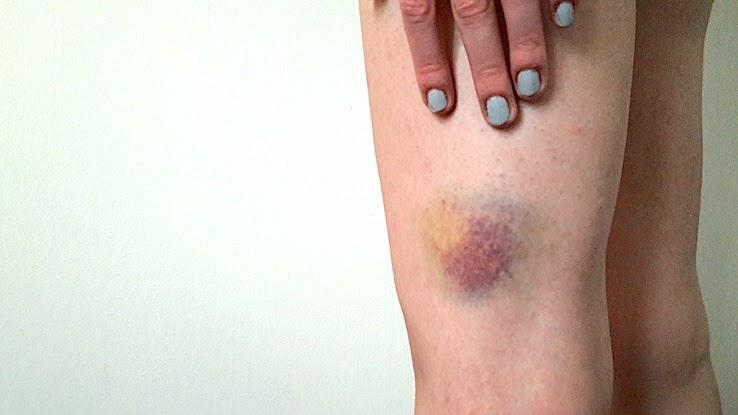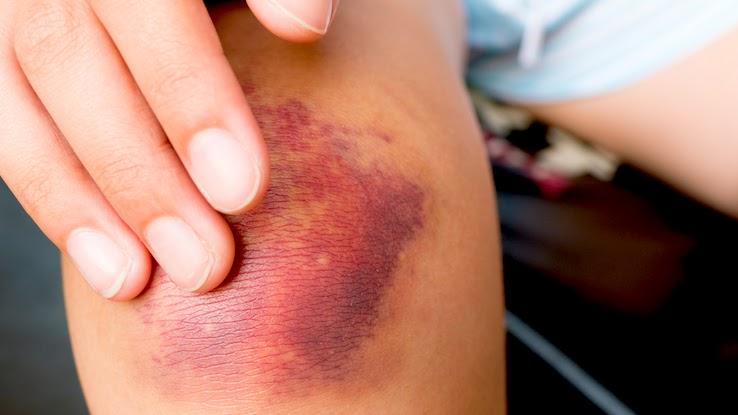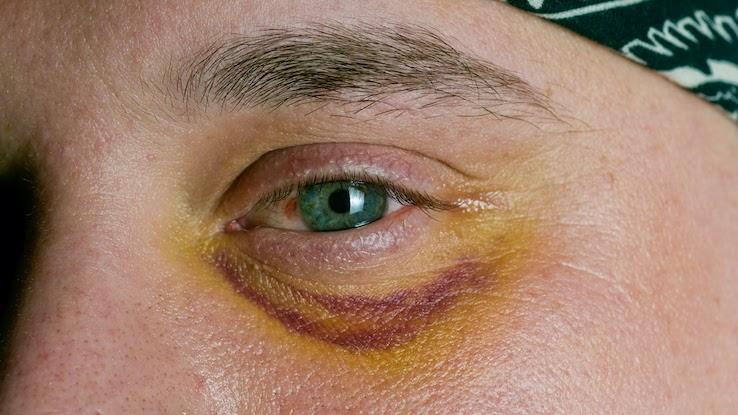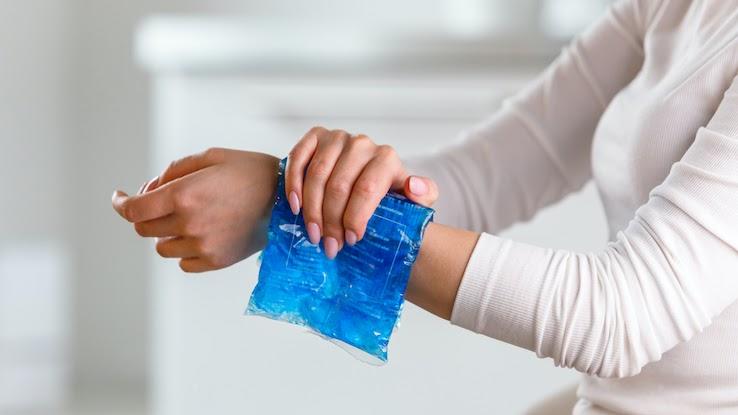After I Choose My Color Can I Change.it Again Fallen Order

Take you ever wondered why your bruises change color, or if those colors signify something? Bruises, also known equally hematomas, get their signature dark purple-bluish color from the presence of blood under the skin. Injury to the site where the bruise forms causes crimson blood cells to break down, and with each new phase of breakup comes a slightly different bruise color.
Though the red blood cells undergo breakdown, the area itself under the site of injury is going through a process of healing. When you encounter your bruise start to change colors, remainder bodacious that your body is performing the appropriate processes to heal your wound.
A bruise develops at the site of an injury on the skin, typically when some sort of trauma causes haemorrhage nether the surface of the skin without actually breaking the surface. With small-scale injuries, such equally bumping your arm or pinching your finger, the bleeding is ordinarily bars to your peel. The trample will likely announced within minutes to hours.

With more forceful trauma, such as twisting your talocrural joint, running into the corner of a table or getting hit with a baseball, haemorrhage typically occurs in the deeper tissues of your torso. The blood then gradually seeps into your skin over a period of hours to days. This is why you might not see a trample for a 24-hour interval or 2 afterwards you've had a fall or other injury.
The size of a bruise depends on what acquired your injury and the amount of forcefulness involved in creating it. The more forceful the injury is, the greater the amount of bleeding and the larger your bruise will be. The closer to your skin's surface the bruise is, the more intense the colors of the bruise will probable be, too.
What Are the Early Colors of Bruises?
Fresh bruises can develop anywhere from minutes to days later on an injury, depending on how deep below your skin's surface the bleeding is. Typically, a new bruise progresses from reddish to blueish to regal within the first few days after an injury.

Scarlet Bruises: When you kickoff go a trample — specially one near the surface of your skin — it usually appears ruby. The color comes from fresh blood leaking into your tissues. Fresh blood is vivid red because it contains a protein called hemoglobin, which carries oxygen from your lungs to other parts of your body.
Blue Bruises: Within a few hours, claret that has leaked from your injured blood vessels loses the oxygen it was carrying. As this occurs, the blood becomes darker and the bruise begins to look more blueish or royal.
Purple Bruises: Typically, over ane to iii days (depending on the severity of your injury), a bruise becomes more intensely purple and may even announced black. This occurs equally blood-red blood cells interruption downwardly and iron is released into the injured area.
Notation that, if you have a deep bruise, the red stage may have already passed by the time you're first able to come across the bruise. In this instance, the commencement color you lot run across may be blue or purple.
Do Bruises Alter Colour as They Heal?
As mentioned, when crimson blood cells break down, they release an iron-rich protein called hemoglobin. While your bruise begins to heal, your torso converts the hemoglobin into other pigmented proteins. The presence of these proteins causes your bruise to change color equally it heals.

Green Bruises: A green bruise indicates that the site of injury has entered its terminal stages of healing. The bruise may transition from purple to green at the edges or center of the injury site. The green color is due to the presence of a hemoglobin breakdown product called biliverdin. The last part of the word, "verdin," comes from the Latin word for "green."
Yellow Bruises: The final step of healing involves the trample turning a yellowish color. This is from the final breakdown production of hemoglobin appearing in your pare; it'south known equally bilirubin. As your torso clears the remaining cellular and other debris from the bruised area, the yellow pigment fades and your pare returns to its original tone.
You may have noticed that many bruises tend to be multicolored. This is because the amounts of blood in different areas of the bruise vary, so the stages of healing overlap.
How Should Yous Care for a Bruise?
There are a few things you can practise to limit the extent of a trample and help it heal apace. The most commonly suggested technique involves a process known as RICE, which stands for "rest, water ice, shrink and elevate":

- Remainder. Once you notice your injury, effort to rest the afflicted area. For example, if you've sustained a accident to your elbow, try non to utilise that arm when possible.
- Ice. Wrap an water ice pack or a bag of frozen vegetables in a clean towel prior to applying information technology to the affected area to minimize peel irritation. Do not leave the ice pack on for longer than 20 minutes at a time. You tin can echo your icing sessions throughout the day to aid prevent swelling.
- Compress. Pinch of the area can help reduce swelling and limit the amount of bleeding under your skin. This tin lessen the severity of your developing bruise. Pinch involves applying slight pressure without cutting off circulation or claret catamenia.
- Drag. If possible, keep the injured surface area above the level of your heart to minimize swelling.
You should see a healthcare professional if any of the following apply to you:
- You seem to find bruises all over your body and cannot business relationship for injuries that would've acquired them.
- Yous've sustained trauma to your face (especially in the case of a black eye).
- Your bruise continues to become larger or stays painful even after following the RICE method for iii days.
- Yous have a family history of bleeding or clotting disorders.
- You cannot functionally use the area affected by the bruise, such as not being able to walk on a bruised ankle.
Though bruises tin can be painful, they're signs of healing and signal your body is working difficult to mend your injury. The next time you get a bruise, you lot'll know how to translate the changing colors of your injury and can tell exactly where you are in the healing process.
Resources Links:
https://medlineplus.gov/bruises.html
https://medlineplus.gov/ency/presentations/100207_1.htm
https://www.mayoclinic.org/first-help/first-aid-bruise/nuts/art-20056663
Source: https://www.symptomfind.com/health/why-bruises-change-colors?utm_content=params%3Ao%3D740013%26ad%3DdirN%26qo%3DserpIndex
0 Response to "After I Choose My Color Can I Change.it Again Fallen Order"
Post a Comment